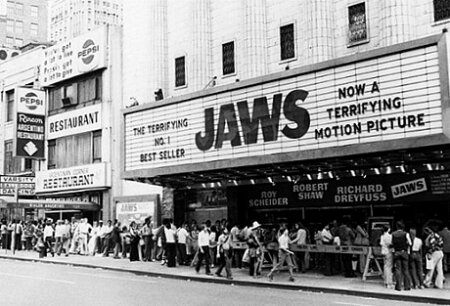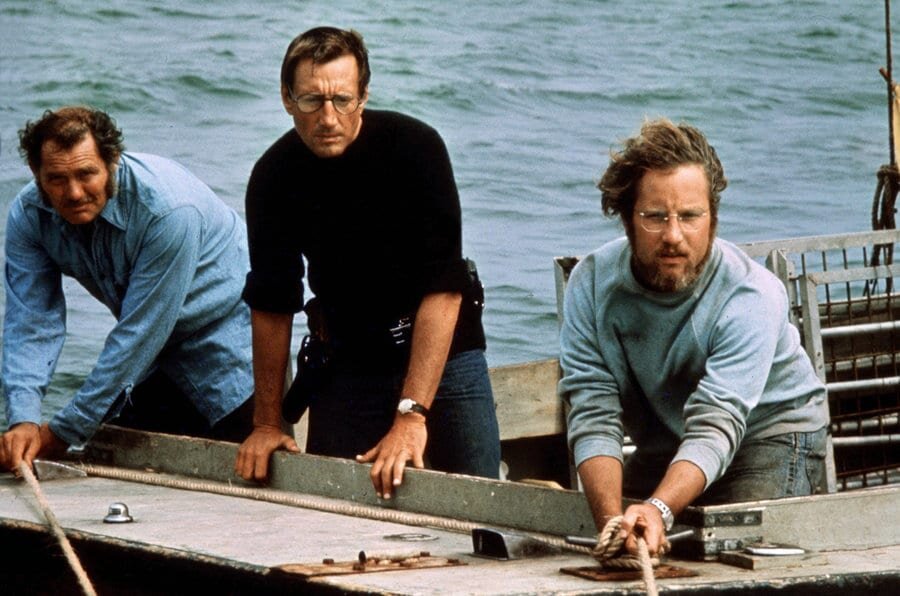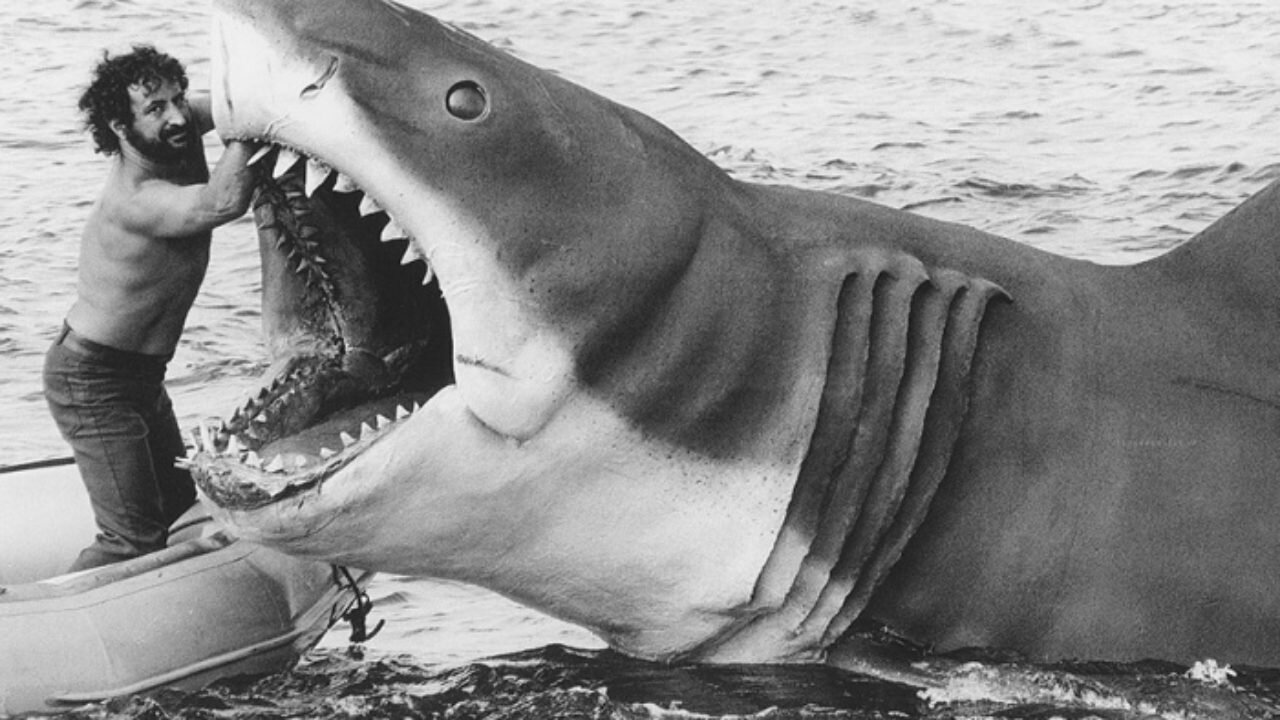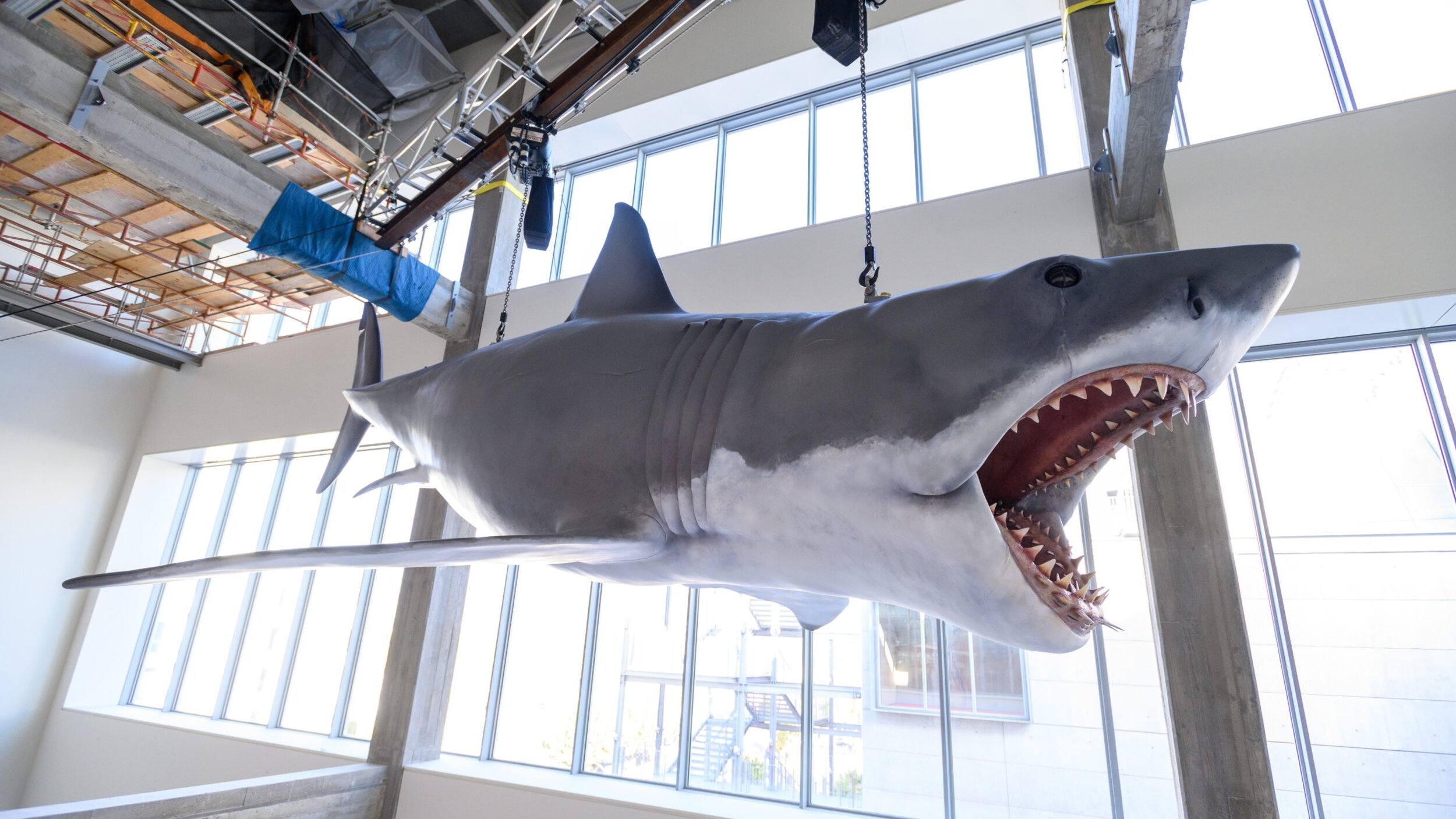The Making Of Jaws - A Metaphor For Life
The tales that accompany ‘Jaws’- both the movie itself and its making - are preserved in theatre folklore. The first blockbuster with queues of filmgoers swimming around the block in anticipation of a modern classic. The first movie to feature entire sequences filmed on location in the sea.
The biggest grossing film at that time. The movie that enabled a 29-year-old Steven Spielberg to pick and choose directorial assignments for the rest of his career, and so on and so on. There are also horror stories that emerged from the depths once shooting was in the can. The actors who turned down roles, the directors who were assigned and then removed, the plethora of script writers and scripts, the shark that intermittently worked at best, the problems filming at sea – these (and more) all played their part in almost knocking Jaws off course to send it to languish in the doldrums of movie history forever.
Over 60 million Americans saw JAWS when first released in 1975.
Jaws did not become the sensation that it was despite these challenges, but because of them. In that way, we can draw parallels between the making of Jaws and life itself, landing some curious but important correlations in the process.
The Actors. “Be Careful What You Wish For”
First off, let’s look at the characters of Brody, Quint and Hooper. How many actors do you think were in the frame for those parts at one time or another but did not end up with the assignment? It is at least 14 and probably a lot more. Robert Duvall, Charlton Heston, Steve McQueen, Gene Hackman, Paul Newman, Robert Redford, Jeff Bridges, Jon Voight, Dustin Hoffman, Kevin Kline, Timothy Bottoms, Jan Michael Vincent, Sterling Hayden and Lee Marvin. Quite often in life, an opportunity comes along that you think is right, but you come to realise (sometimes quickly, sometimes after a long time) that it is not right. Lee Marvin as Quint would have been fantastic – probably. But then we never would have seen Robert Shaw, and we would never have had the Indianapolis speech, or the lines that he soaked up from the Martha’s Vineyard locals and introduced into the scripts, or the sparks between him and Richard Dreyfuss that spilled onto the screen.
Paul Newman (left and Lee Marvin were both early casting ideas for JAWS
For Zanuck and Brown, Marvin’s rejection was like the job that you really, really wanted, where you spent days preparing for the interview only to be turned down with a ‘thank you for your interest but we will not be proceeding with your application at this time’. Maybe it made you try harder in the next interview. It taught you a lesson. Actually, maybe the job you ended up getting was better, more interesting, more money, working with great colleagues. Lee Marvin’s rejection was possibly the best thing to happen to Jaws because it meant that Zanuck and Brown were able to recommend Robert Shaw to Steven Spielberg, having just worked with Shaw on The Sting. And what if they had decided to offer the part of Brody to Charlton Heston? It was, apparently, a close thing. A Brody who you knew right from the start was going to win because Heston always wins? A Brody without fear or uncertainty over his abilities?
That kind of Brody would have changed the focus of the film entirely. The main thrust may have ended up being a power struggle between Quint and Brody, or a psychological ego trip watching an initial adult-child relationship between Heston’s Brody and Hooper turn into an adult-adult relationship as Hooper learns from the master as the film unfolds. Heston would have winked at a terrified Hooper, hiding in the wreckage of the Orca, before firing the shot into the oxygen canister that explodes the shark and brings on the final scene. He probably would have then woven the broken bits of boat into a usable raft, filtered some sea water to make it drinkable and persuaded a passing dolphin to tow them ashore. And Dustin Hoffman as Hooper? Well, I can see it, but I don’t think Hoffman would have humoured Shaw the way Dreyfuss did, and as a result Shaw’s performance would have been different. Shaw would have been more acknowledging of Hoffman’s Hooper, with Hoffman standing his ground with more confidence.
The key relationship conflict may then have been between Quint and Brody (who’s captain of this vessel…? followed by fight scene, and so on). This would have ruined the film because the whole point of Hooper is that he is the last person Quint would voluntarily allow anywhere near the Orca. The fact he is on the boat and Quint has such little respect for him (except possibly when he’s drunk) would have been lost. So again – we must be careful what we wish for. Sometimes in life things go your way. Sometimes they don’t. But if you make the best of what you have control over, you will achieve something unique and special.
Location casting director Shari Rhodes is quoted as saying that JAWS is “the most brilliantly cast threesome I’ve ever seen on film."
The Shark. “Adversity – The Mother of Creativity”
Once someone has watched Jaws for the first time, ask them how many minutes they think the shark was on screen for. The film is over 2 hours long, so at least 20 minutes, right? 30 minutes? Maybe more? The answer is about 4 minutes. Just over 3% of the film contains footage of the shark. 97% of the film contains no shark, although the characters do talk about it an awful lot and you see evidence of places it might be / might have been (Sunday roast anyone?).
There were 3 sharks built, pneumatically powered – one full body prop that could be towed, and two platform sharks – one with its right flank exposed that could be used for camera left shots and one reverse version for camera right shots. 40 technicians worked on creating the sharks, but once they were immersed in the sea, the mechanical fish started to fail. Salt water damaged the pneumatic hoses, the shark skin soaked up liquid causing the carcasses to balloon, water resistance caused the frames to fracture, bad weather hampered the shooting of scenes and entanglement with seaweed on the sea bed wasted time.
Jaws Production Design Joe Alves working on Bruce between takes
Ultimately, the sharks barely worked. This meant that many scenes featuring the shark had to be reworked – for example - for most of the shark hunt, instead of a shark, you see a yellow barrel. And in the opening scene where the victim is devoured by the shark, you see precisely zero seconds of shark. So why did all of these seemingly conspiring problems not cause the film to flop? Spielberg noted that the only way to make the film work would be to replace the horror with suspense, in the same way that Alfred Hitchcock used suspense almost entirely to create cinematic classics. For this to work, the actors had to be totally, 100% believable. Spielberg having his hand forced in this way meant that he had to create an atmosphere of fear and dread through sounds (John Williams’ classic score), changing the script almost entirely, getting the actors to be absolutely on the top of their games, and using the only real footage he had of a real shark.
They had been offered some footage of a real shark attacking a cage that was similar to the cage Hooper was submerged in. Spielberg realized it had to be used because of the lack of shark on the screen. The problem was that the cage in the real footage was empty, but in the script Hooper was killed in the cage by the shark. This led to a rewrite of the script that enabled Hooper to escape so that the real life footage could be used.
When Bruce worked, he was terrifying.
The suspense felt throughout the film would not have existed had the shark worked properly. Similarly in life things sometimes do not work out how you want them to. Sometimes you have to settle for what you think is second best. Maybe you could not afford the car you really wanted from new, so had to settle for a second hand version, only to find that there were annoying design flaws with that car that you had not really thought about. Maybe that dream holiday was too expensive so you ended up on a driving holiday round the coast where you ended up finding fascinating places and people you never would have come across had you not been offered them as the only option. Maybe, just maybe, you don’t need to see the shark to still be scared by it.
What Does This All Mean?
The fact that Richard Dreyfuss considered asking for his name to be removed from Jaws’ credits while the film was being edited goes some way to describing the trepidation that followed the filming of the final few scenes. In interviews these days, Dreyfus admits that it was one of the best learning experiences of his life and he would not change a single second of it, except perhaps making the sea a couple of degrees warmer. Life rarely turns out exactly as you had planned it. If it did, it would be predictable, boring and tedious. The fascinating thing with life is its unpredictability. Being successful in life is not about ensuring everything goes perfectly to plan. The secret is being able to recognize when it is not going to plan and adapt. Your life may end up being a blockbuster if you adapt creatively and positively and accept that the place you end up will not be where you expected. Nothing worth having is achieved easily. You will discover what your own personal Jaws looks like once you have overcome your obstacles and stared adversity in the face. I hope you have them queueing round the block.
Words by Tim Birch
If you would like to write for The Daily Jaws, please visit our ‘work with us’ page
A newly restored Bruce The Shark hangs proudly in the Academy Museum of Motion Pictures






